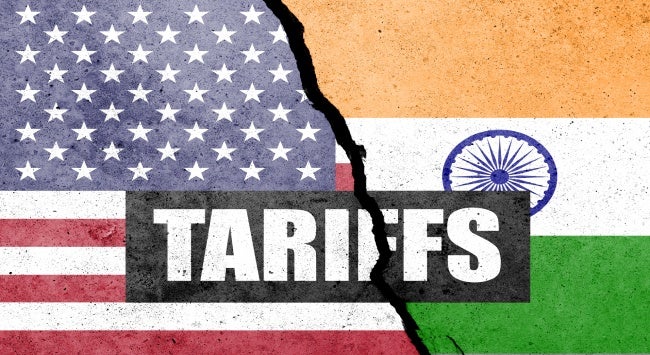Summary
India and the United States might not be able to reach a deal by 1 August 2025. The negotiating context has become complicated making a closure difficult.
The United States’ (US) President Donald Trump indicated a few days ago that the US and India were very close to Signing a deal. However, it is unclear if a deal will be reached before 1 August 2025. Failure to reach a deal by the date will mean most Indian exports to the US will be hit by additional tariffs of 26 per cent. Countries like Japan, Indonesia and Vietnam have already made deals with the US and will be charged tariffs lower than 26 per cent.
India would have wanted a similar outcome for its exports too. However, negotiations are hitting hurdles and a deal might not be possible by the deadline.
Market access issues in politically sensitive sectors for both sides are hard to negotiate. India is unlikely to give in to the US’ demands for lower tariffs on agriculture and dairy. Similarly, the US will be unwilling to lower sectoral tariffs on steel, aluminium and automobiles.
The point, however, is that these issues were always on the table. When both sides began negotiating a deal earlier this year, they were confident of a reaching a trade deal by the fall of 2025. While 1 August 2025 is an earlier deadline in that respect, it is unlikely that the unresolved issues will be sorted out even if negotiations stretch for a few weeks beyond the deadline.
Both sides appear determined not to give up domestic market access unless their respective demands are met. This stubborn posturing has much to do with the complications that have arisen in US-India ties affecting the context of the trade deal.
Trump and India’s Prime Minister Narendra Modi had agreed on finishing the first part of a bilateral trade deal by the fall of 2025 during their meeting in Washington on 13 February 2025. India was one of the earliest to start negotiating a bilateral trade deal with the US during Trump 2.0. Indeed, they begun discussing well before the US announced reciprocal tariffs in early April 2025. Down the line, however, the negotiating context began to change due to several reasons casting a shadow on bilateral ties.
One of the first reasons is the US’ claim to have mediated a ceasefire between India and Pakistan during their hostilities in May 2025. Trump claimed credit repeatedly in this regard while India denied any US role. Trump not only claimed credit for brokering peace but also suggested that he ‘settled it through trade’. This meant that from the US president’s perspective, trade was a tool that could be used for securing peace and enhancing security.
From an Indian perspective, this was distinctly uncomfortable. This meant that in the ongoing negotiations, domestic market access could be demanded in exchange for regional peace and security. India would be naturally wary of trade concessions on security grounds.
The second reason complicating the context of the trade talks is the US’ antipathy towards the BRICS. Trump’s threat of imposing additional tariffs on the BRICS because of its anti-American postures brings India in the spotlight too as a core member of the bloc.
The latest BRICS summit noted a sharp critique of the US’ trade policies by the group. Soon after, Brazil was imposed 50 per cent tariffs on its exports to the US, making a deal with the US a remote possibility. As a BRICS member, India is unlikely to escape the broad US threats of more tariffs on the BRICS unless it concedes to the US’ demands in a bilateral deal.
A third point of friction arises from the latest US posturing on Russia. Trump has threatened to impose secondary tariffs on Russia’s major trade partners to ensure that they trade less with Russia. This will inevitably affect India.
India is a major buyer of Russian crude oil. Coupled with the new round of sanctions introduced by the European Union on buying Russian oil, India will be worried over the implications for its oil purchase and long-term energy security prospects. As US-India trade talks draw close to the deadline of 1 August 2025, the secondary tariff threats put further pressure on India to concede more market access.
If India eventually opens up sectors like dairy and agriculture that it has stubbornly protected for decades and also accepts American demands for deeper market access in other guarded sectors like domestic professional services and government procurement – despite domestic resistance and equivalent access in the US market for its exports – it will mean that security guarantees will achieve the liberalisation that economic logic could not. Whether it happens is a matter of time, making the deal even now a difficult prospect.
. . . . .
Dr Amitendu Palit is a Senior Research Fellow and Research Lead (Trade and Economics) at the Institute of South Asian Studies (ISAS), an autonomous research institute at the National University of Singapore (NUS). He can be contacted at isasap@nus.edu.sg. The author bears full responsibility for the facts cited and opinions expressed in this paper.
Image Credit: shutterstock
-
 More From :
More From :
-
 Tags :
Tags :
-
 Download PDF
Download PDF



